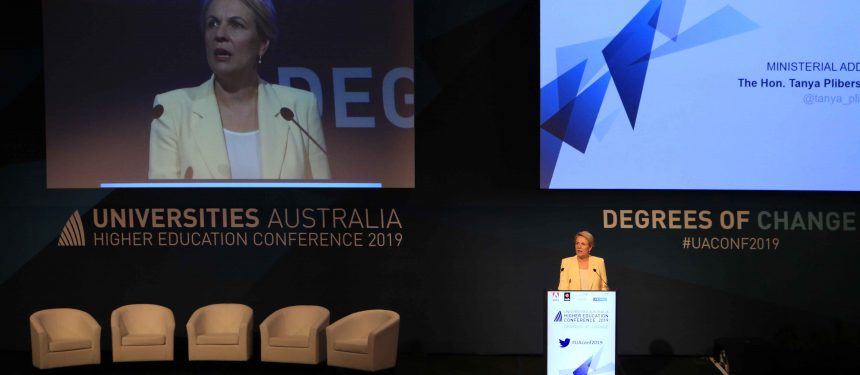Australia’s international education industry could be facing a new national strategy less than three years after the release of the AIE2025 policy, stakeholders at the Universities Australia conference heard.
News and business analysis for Professionals in International Education
Have some pie!
Australian political parties outline intled policies at UA Conference
 Shadow education and training minister Tanya Plibersek pledged a revitalised international education strategy. Photo: The PIE
Shadow education and training minister Tanya Plibersek pledged a revitalised international education strategy. Photo: The PIE “The five-year strategy the council has been asked to implement is vague”
Themed Degrees of Change, the conference heard from both the education minister Dan Tehan and shadow education and training minister Tanya Plibersek. Both were speaking with this year’s federal election, likely to be held in May, in mind.
In her address, Plibersek called the current national strategy for international education “vague” and signalled an overhaul of both it and the council overseeing its implementation.
“While Labor strongly supports a council to coordinate international education across the federal government, we believe both its membership and the strategy guiding the council’s work needs updating,” she told delegates.
Plibersek added Australia had become too reliant on a handful of countries (a veiled reference to concerns over Chinese students in Australia), and that government-backed TAFE providers did not see an equal share of the benefits of international education.
“The five-year strategy the council has been asked to implement is vague, and fails to grapple with the breadth of issues the sector faces, including market diversification,” she said.
“I want to see the development of a more ambitious strategy on issues that really matter to the sector.”
According to the latest polls, Plibersek’s Labor party is expected to take power from the Liberal-National coalition,which would signal the drafting of a new national strategy less than three years after the release of the bipartisan AIE2025.
Labor has for some time criticised the government’s management of the international education strategy and the loss of the world’s first international education minister in the fallout from the previous federal election.
Meanwhile, in a speech that went under-time and which The PIE News understands was substantially edited from what was planned initially (or indeed circulated before the speech was made), Tehan renewed focus on increasing international students into regional areas, as well as improving regional domestic students’ access to higher education.
“The data… shows when it comes to the percentage of those overseas students who are coming here to study, only 3% are going out into our regional and rural campuses,” he said.
“That’s something else that we need to look at, and together we need to look at addressing.”
“We want to make sure the economic returns… [are] spread more evenly across the nation”
Tehan’s address continued his step back from Prime Minister Scott Morrison’s comments in August 2018, which indicated Canberra was considering pulling potential policy levers to push overseas students into the regions.
Talking on how to increase the number of foreign students in regional Australia, Tehan told delegates it was not a “zero-sum game” and did not indicate the government would take policy cues from a recent poll in favour of limits to student numbers.
“We want [city] campuses to continue to bring in international students, but we also want to make sure the economic returns that we get from those international students [are] spread more evenly across the nation.”
Tehan’s address did not cover the same domestic funding points as his predecessor Simon Birmingham, who told the 2018 conference it was “a mistake” for the university sector to underestimate the “resolve of the government to live within our means”.
At the time, the funding cuts were anticipated to drive competition for international students among universities, which would need the higher tuition funs to cover costs.
However, The PIE understands a large portion of the text removed from Tehan’s address did seek to justify the cuts against a A$2bn surplus in the university sector in 2017 and increased operational costs.
Full-year 2018 data released at the start of March shows Australian international student numbers increase 11% to reach a record 693,750.
Still looking? Find by category:


